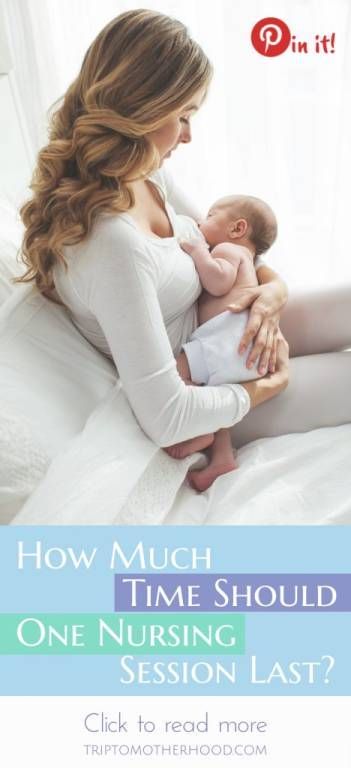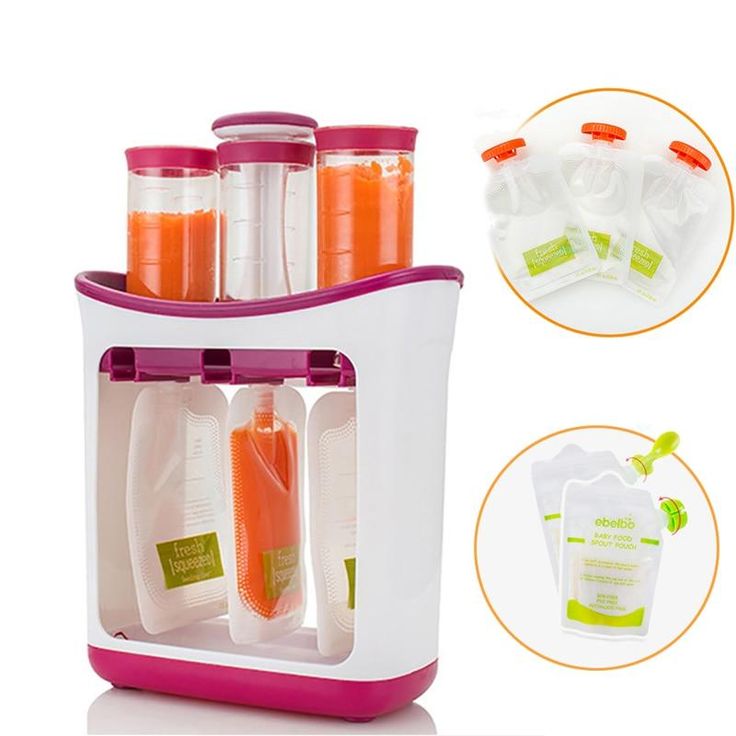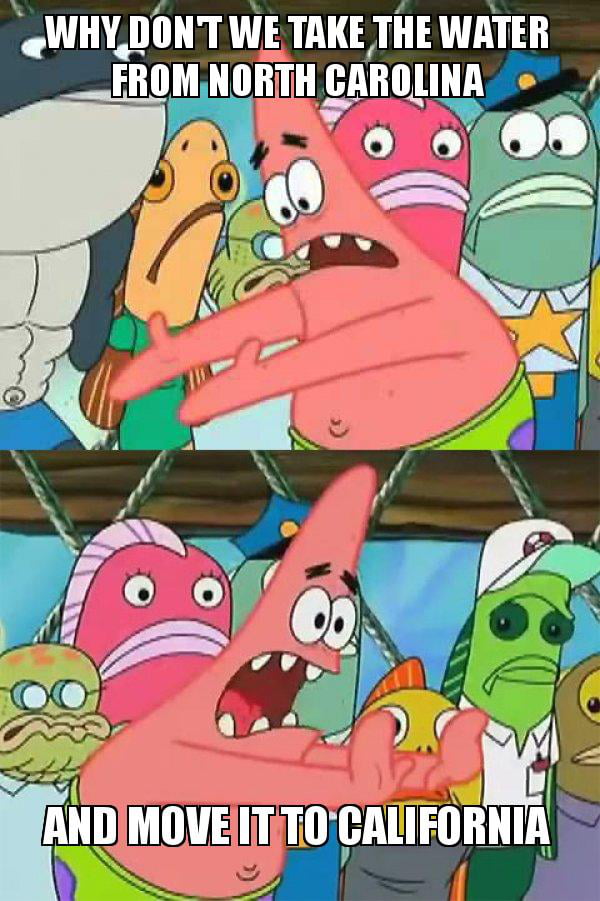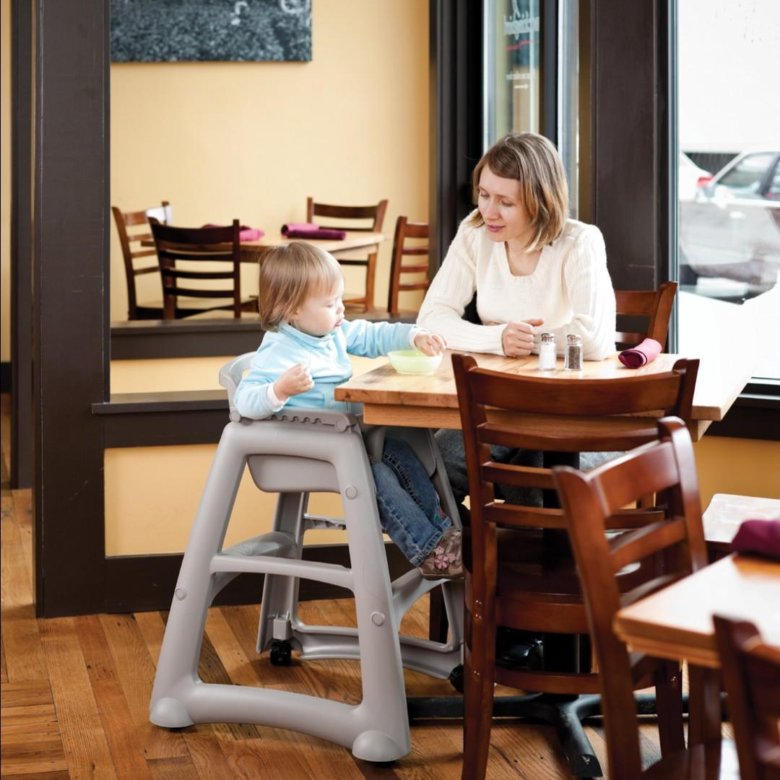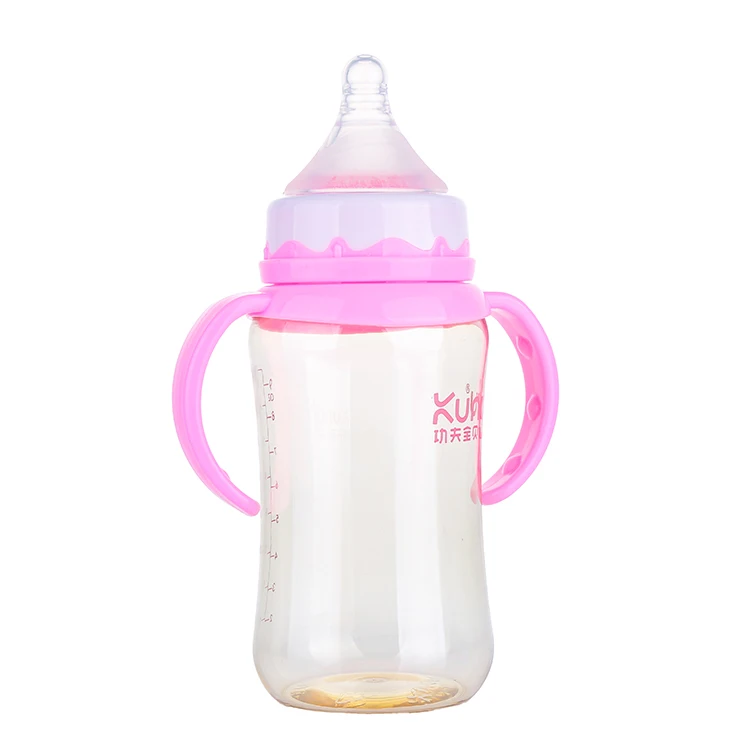What do you feed baby goldfish
Raising Goldfish Fry: Complete Care Guide
If your goldfish are happy and healthy and you have a male and a female, then eventually, you’ll end up with your goldfish spawning. After spawning, you may end up with baby goldfish, also called fry. Getting the eggs to safely make it to “fry” level does take some doing on your part, but once you have your little fry, you’ll need to know exactly how to care for them to maximize their health and growth. Let’s talk about raising goldfish fry!
Considerations Before You Have Fry
Image Credit: zoosnow, PixabayWhat are you going to do with a bunch of baby goldfish? Many people allow their goldfish to spawn and create fry without considering what they’ll do with extra goldfish. Raising goldfish is not typically a profitable venture, so money should not be a driving factor in allowing your goldfish to reproduce. Keep in mind that goldfish can get quite large and produce a heavy bioload, so even a few extra goldfish can make tank care more difficult.
Goldfish can lay thousands of eggs in a single spawning session! Most of these eggs will not be fertilized, but you can still end up with dozens or hundreds of goldfish fry from a single breeding. If you don’t have the space for additional goldfish, it may be in the best interest of the fish you already have to leave the eggs be and let nature take its course. You can also remove the eggs and dispose of them.
Caring for Eggs
View this post on Instagram
A post shared by Taichi Kawasumi (@nogoldfish.nolife)
So, your female laid eggs. Now what?
The first thing you should do is remove the eggs. Spawning mops, which can be plants or items like thread or yarn, can be added to the tank to catch the eggs. This will make it easier for you to remove the eggs from the tank and it will keep the eggs safe if you aren’t present when the spawning occurs.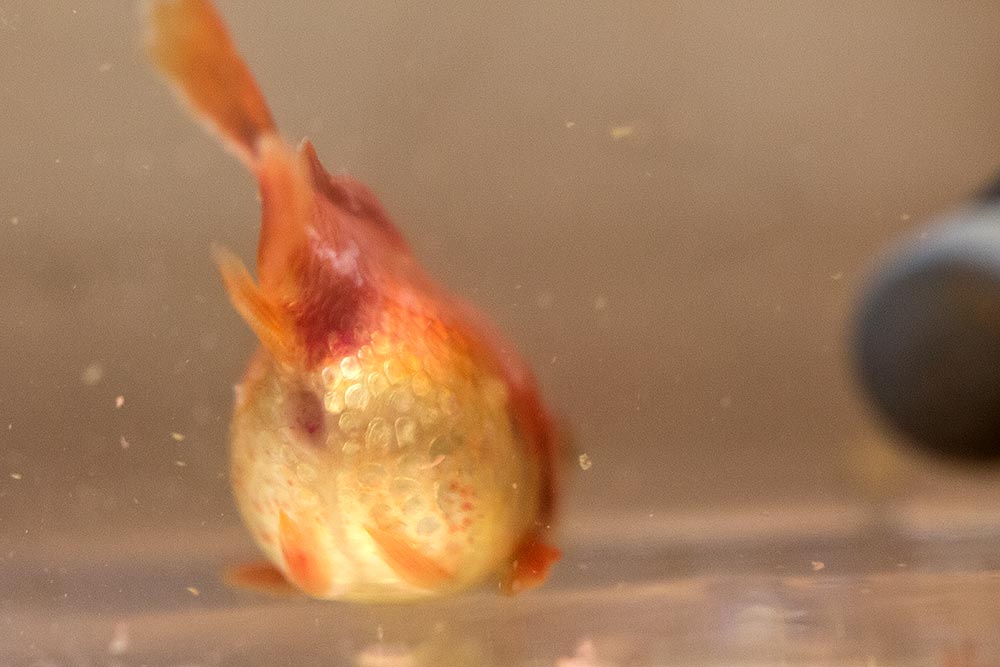
Whether you’ve set up a specific breeding tank or your goldfish are spawning in your main tank, the eggs should be separated from all other fish as soon as possible. Most fish will eat eggs, and this includes the parents. They will also eat fry, which are very tiny when they hatch. Allowing the eggs to stay in the tank with adult fish is risking losing some or all of the fry, unless you have excellent plant cover.
Housing Fry
View this post on Instagram
A post shared by Manny (@mannyggoldfish)
Within 2-7 days, you will have baby goldfish beginning to hatch from their eggs. They typically spend the first two days hanging onto surfaces, so you’re likely to see them hanging out on the tank walls. They usually won’t eat during this period because they are still absorbing the nutrients from what is left of their egg.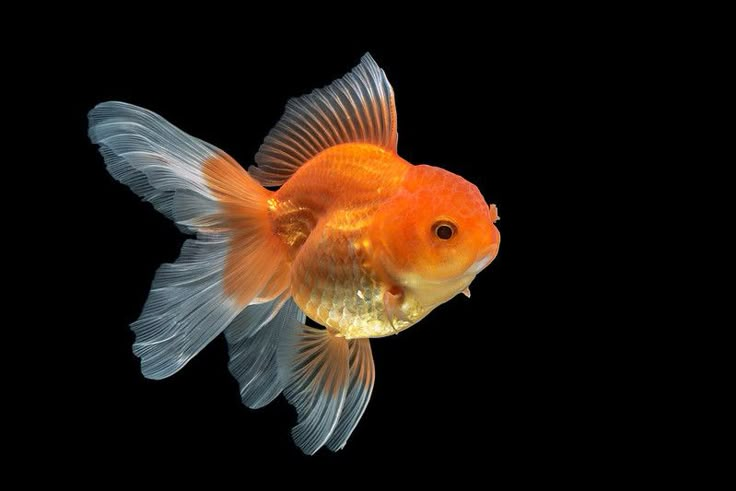 For the best chance at survival, provide your fry their own tank. A fully cycled tank is ideal because they are sensitive to poor water quality, so if you intend to raise fry, having a fry tank set up before spawning occurs is your best bet.
For the best chance at survival, provide your fry their own tank. A fully cycled tank is ideal because they are sensitive to poor water quality, so if you intend to raise fry, having a fry tank set up before spawning occurs is your best bet.
Your fry tank should be kept at a temperature of 70-75˚F for the best survival of eggs and fry. It should be well aerated, but the current should be gentle. Fry are not strong enough to fight a strong current. They also should not be kept with a regular filtration system as this is likely to suck them up. Provide your fry with a sponge filter or air stone. A sponge filter is ideal because it encourages colonization of beneficial bacteria to help maintain the water quality. Fry do not need a full tank setup like adult goldfish and things like décor and plants will just make tank care more difficult.
Feeding Fry
View this post on Instagram
A post shared by @mayu4724
Goldfish fry are tiny and have tiny mouths to match.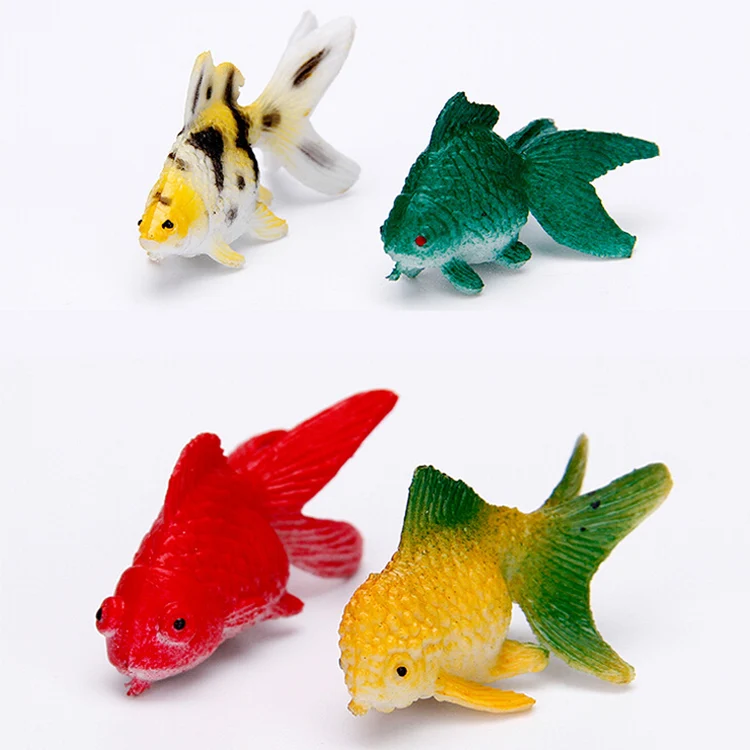 They should be fed fry food for at least the first few weeks of life. You can offer them commercial fry food, baby brine shrimp, infusoria, and some algae are all good food options for goldfish fry. After the first couple of weeks, you can begin offering slightly larger food options like daphnia and mosquito larvae. After the first two days of not feeding, you should begin offering food every 4 hours. This will support rapid growth and ensure all fry are getting enough to eat.
They should be fed fry food for at least the first few weeks of life. You can offer them commercial fry food, baby brine shrimp, infusoria, and some algae are all good food options for goldfish fry. After the first couple of weeks, you can begin offering slightly larger food options like daphnia and mosquito larvae. After the first two days of not feeding, you should begin offering food every 4 hours. This will support rapid growth and ensure all fry are getting enough to eat.
Many goldfish die as a result of improper feeding, diet, and/or portion sizes – which can be easily prevented by proper education.
That's why we recommend the best-selling book, The Truth About Goldfish, which covers everything about goldfish nutrition, tank maintenance, illnesses & more! Check it out on Amazon today.
Remove uneaten food after a few hours to prevent fouling the tank water. Your goldfish should be fed these nutrient-dense foods for the first six months of life to ensure rapid, proper growth. As they age, you can begin offering small pellets and other adult fish foods, but they should still have the option of live foods and other foods that stimulate growth and development.
As they age, you can begin offering small pellets and other adult fish foods, but they should still have the option of live foods and other foods that stimulate growth and development.
Caring for the Fry Tank
View this post on Instagram
A post shared by Fambridge Fish 🐟 (@fambridge_fish)
You should perform 2-3 water changes of 25% every week to maintain water quality. Pre-treat new water before adding it to the tank since the fry will be extra sensitive to chlorine and contaminants. To perform water changes, you’ll need to avoid typical gravel vacuums and anything that can suck up or otherwise harm your fry. Airline tubing can be used as a siphon to remove water and is a very safe option for water changes. You can also spot clean the tank with a turkey baster or syringe, sucking up only what is needed.
Remember, your fry are very tiny, so even with the utmost care, there’s the potential to suck one up in your tubing, turkey baster, or syringe. When it comes to caring for a fry tank, never drain your water directly into a sink, bathtub, or anything that will immediately drain. Draining water into a bowl or bucket will allow you to inspect the water for stray fry before you dump the water. Ensure you remove dead fry, unfertilized eggs, and uneaten food when you perform tank cleanings.
Moving Fry
View this post on Instagram
A post shared by 💕🦄 (@kittylovestofu)
The main thing to consider before moving your fry from their baby tank to an adult tank is their size. If your fry are still small enough for the adults to eat them, then leave them in their fry tank until they are larger. They are usually ready to be moved around 6 months of age. When they are ready to be moved, you need to acclimate them to the new tank just like you would a new fish from the pet store. Moving them directly from tank to tank can lead to shock and death.
When they are ready to be moved, you need to acclimate them to the new tank just like you would a new fish from the pet store. Moving them directly from tank to tank can lead to shock and death.
You can float them in a bag of their own tank water until the temperature adjusts, then poke small holes in the bag to allow for water exchange before you release them into the tank. Another option is to use drip acclimation before adding them to the main tank.
Culling
Culling is a conversation that many people don’t want to have, but it is a necessary conversation when it comes to breeding your goldfish. Some fry may be deformed, injured, or otherwise unhealthy. If you have a fry that is suffering, it is cruel to let its suffering continue. Some people also find they need to cull their least desirable fry to help maintain the fish population they can manage. Remember that keeping too many fish and not being able to keep up the needs of the tank is cruel and may result in unnecessary illness and death.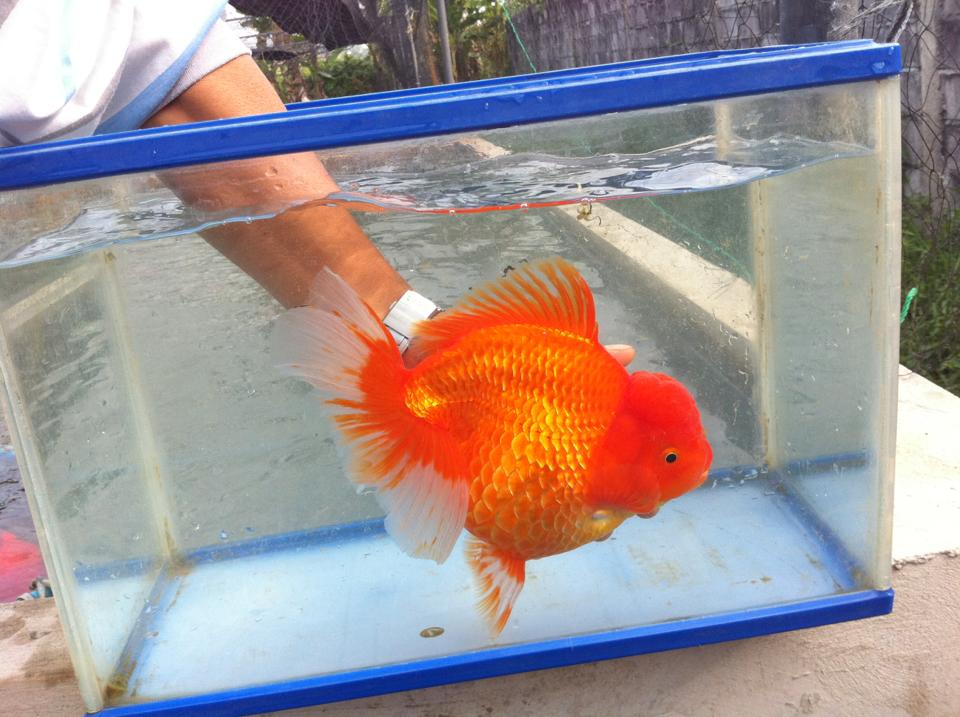
To euthanize fry, you can put them in a small container or bag of tank water and a few drops of clove oil. Clove oil is a sedative and is often used by fish veterinarians as sedation. It will help your fry gently fall asleep without feeling any suffering. Sometimes, clove oil is enough to help them pass. If you are unsure if they have passed, you can put the container into the freezer. The clove oil will ensure they stay asleep through the whole process.
In Conclusion
Raising goldfish fry isn’t for the faint of heart. It is hard work and can be full of heartbreak and difficult decisions. However, choosing to raise fry is a commitment to the health and wellness of your fish, and you are responsible for providing them with high-quality care. Carefully consider the pros and cons of raising fry before you attempt it to ensure you are ready to commit to the entire process.
Featured Image Credit: kjnk, Shutterstock
Baby Goldfish: How to take care of goldfish babies
Caring for goldfish can be very rewarding.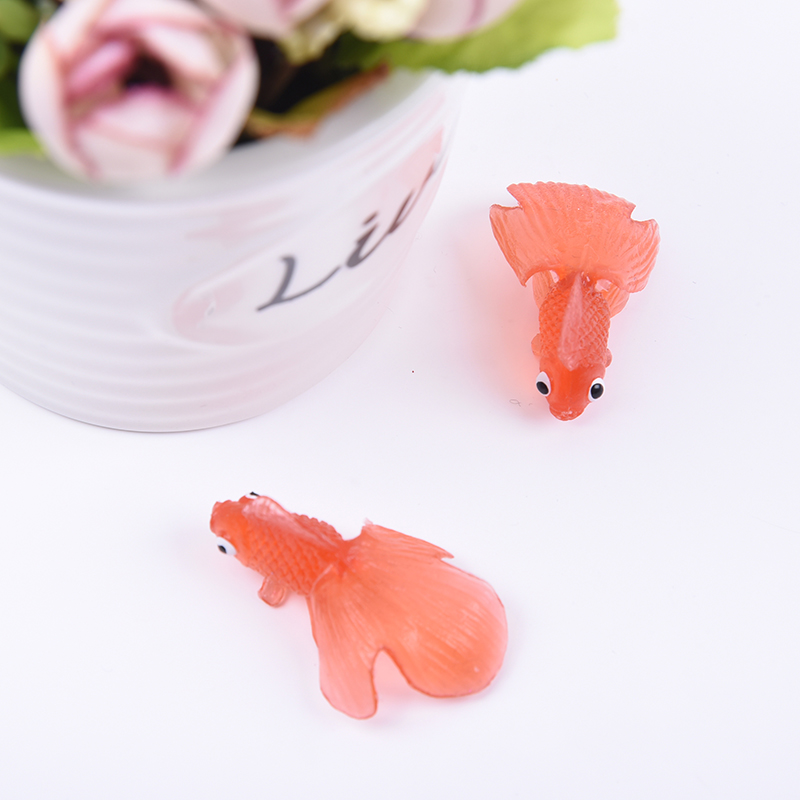 You set up their tank, make sure their water is just right , choose what food they eat, and watch your goldfish grow and play.
You set up their tank, make sure their water is just right , choose what food they eat, and watch your goldfish grow and play.
But there is something even more rewarding than looking after a goldfish you bought from the pet store. How about raising a goldfish all the way from birth to adulthood?
In this guide to baby goldfish, we look at how goldfish babies are born, how they grow, and – most importantly – how you should care for them.
How do goldfish have babies?
Before baby goldfish can be born, two sexually mature adult male and female goldfish must mate.
Goldfish only mate at specific times and under specific conditions. For example, the temperature of the tank is important.
If you’re not sure how to encourage your goldfish to mate, or if they are ready, check out our guide to breeding goldfish to learn more.
Once your goldfish have successfully mated, the female goldfish will lay eggs. Then, the male goldfish will fertilize the eggs.
Goldfish eggs in a tank. These eggs are two days old.About 4 days later, the eggs that were successfully fertilized and survive – i.e. don’t get eaten by the adult goldfish or sucked into your filter! – will hatch.
Your goldfish babies have been born!
What do the babies look like?
Once your goldfish eggs hatch, you’ll need to look closely to find the tiny goldfish babies.
For the first 4 days or so they will be stuck to the leaves of your plants, so look carefully. Where you previously just saw eggs, you should now see tiny black baby goldfish with their yolk sacs attached.
After about 3 more days, your goldfish will be able to swim around freely.
What color are the babies and how does this change?
Newborn baby goldfish start out black.
As they grow, they develop a brown color, perhaps with hints of silver. Some areas of their body are almost see-through.
It can take up to two years for a goldfish to fully develop its color.
And even then, goldfish can continue to change color throughout their lives.
Baby goldfish growth rate
Of course, baby goldfish don’t stay so tiny and black in color for long.
One of the joys of breeding goldfish is that you get to see the babies grow and develop over time.
Once your baby goldfish reach the free-swimming stage, their bodies will be around 5mm long. They will have a very small stubby tail, pectoral fins (on their sides) and a fin on their back too.
Over the next week, your baby goldfish will grow by almost 40%. Their caudal fin (the tail fin) will develop a lot during this stage of growth.
This video shows two-week old goldfish flapping their tail fins in the water.
The following week – the third week after hatching – your goldfish will continue to grow quickly. You’ll also notice their dorsal fin (the fin on their back) becoming more defined.
At three weeks old, the dorsal fin is clearly visible from some angles.By the fourth week, the dorsal fin will be well developed.
By the fifth week, all of your fish’s fins will be well developed and they will have scales.
From week six onward, your fish is essentially “complete”. Like a miniature version of an adult goldfish. From now on, it’s all about growing in size and weight.
Caring for baby goldfish
Tank
To stop your adult fish from eating their own eggs, you should remove your goldfish eggs from your main tank as soon as they have been fertilized by the male.
Removing the eggs could be as simple as transferring your spawning mop, if you used one. Or you may have to gently siphon the eggs off things like plants and decorations.
Place the eggs into a small tank – perhaps 3 to 5 gallons in size – with around six inches of water.
Add a small sponge filter to the tank. Don’t add a large, powerful box filter, as the babies will very likely get sucked inside!
Your baby goldfish should stay in smaller tanks – separate to the adult fish – until they meet two important conditions:
- They are strong enough swimmers to not get sucked into the main tank’s filter
- They are bigger than the adult fish’s mouths!
Only once these conditions are met should you add babies to an adult tank.
Temperature
We recommend maintaining a temperature between 70-75oF (21-24oC) in your baby goldfish tank. This temperature is warm enough to encourage rapid growth, but without being too hot for your fish.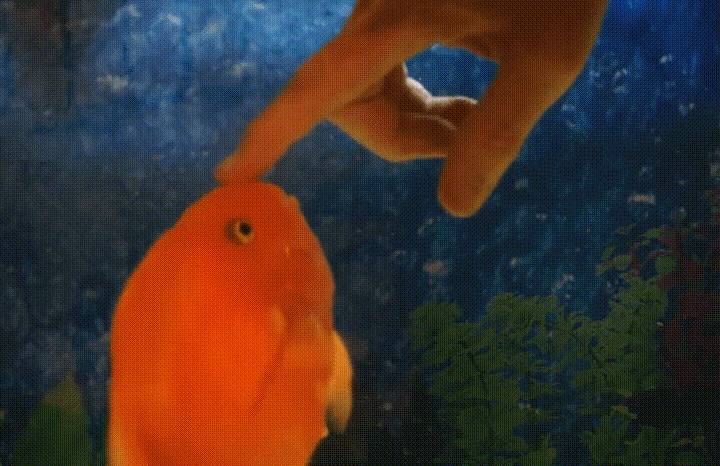
It’s very important to avoid any sudden changes in temperature. A sudden drop to a cold temperature will stress your fish, which could cause them to get sick or even die.
Food
The first few days
For the few first days after hatching, you should not feed your baby goldfish at all.
While this might seem odd, it’s because the goldfish arrive well-prepared with their own packed lunchbox!
Baby goldfish hatch with a “yolk sac” attached to their bodies. This pouch contains all the food they need for the first few days.
The first month
Take some hard-boiled egg yolk and soak it in water. Give it a good shake, then add to your baby goldfish tank in small quantities.
You may also wish to try crushed brine shrimp and baby fish food.
Remove any food that is left uneaten so that it doesn’t pollute your tank.
The second month on
Your fish should now be able to eat the same foods you feed to your adult goldfish.
Just be sure to crush up the food if necessary. You need to make sure the pieces aren’t too big for the babies mouths!
You need to make sure the pieces aren’t too big for the babies mouths!
Death
We should add that – no matter how well you care for the babies – you should be prepared for lots of them to die.
The reason that goldfish lay so many eggs, and that so many babies hatch, is that only a small percentage make it to adulthood. They need to have lots of babies to ensure that some survive.
If you manage to keep 20% or more of your baby goldfish alive to give away to other people, or to move to your adult tank, you’ve done very well.
What are baby goldfish called?
Throughout this article, we’ve referred to the little new members of your goldfish family as “babies”. However, this isn’t the technical term for baby goldfish.
When they first hatch from their eggs, baby goldfish are called larvae. They carry a yolk sac with them for food. This periods lasts for two to three days.
The baby goldfish then lose their yolk sacs and become capable of feeding themselves. Once they reach this stage, the babies are called Fry.
Once they reach this stage, the babies are called Fry.
Once baby goldfish develop scales and have fully formed fins, they are known as juveniles. This phase lasts until the goldfish is a sexually mature adult fish.
How, what and how much to feed goldfish?
Goldfish are extremely playful, cheerful and voracious creatures. They quickly get used to the person of their breadwinner and when he approaches the aquarium, they begin to jump out of the water with hungry eyes and spank with sponges. This behavior of pets can be repeated 10 times a day, but this does not mean at all that goldfish are hungry all this time. It's just a reflex. It is necessary to feed goldfish 2-3 times a day, with a couple of pinches of food. This is quite enough for their normal growth and development.
While feeding your goldfish can be a lot of fun, don't overdo it. Fish do not have a sense of satiety. Don't forget about it. So don't overdo it.
Please do not feed them any bloodworms, worms, any home-made stuffing with hercules, etc. Goldfish are phytophages. Their digestive tract is very long, it is not able to properly absorb protein foods. Which in turn provokes problems with the gastrointestinal tract: inflammation, internal bacterial infection. The latter are extremely difficult to treat. Their diet should consist of 70% plant foods, 30% protein.
In our opinion, the best food for goldfish is duckweed + branded specialized food. But the problem is that even two young goldens will gobble up the duckweed for two times. A separate aquarium ibn vessel is needed for its cultivation in large quantities.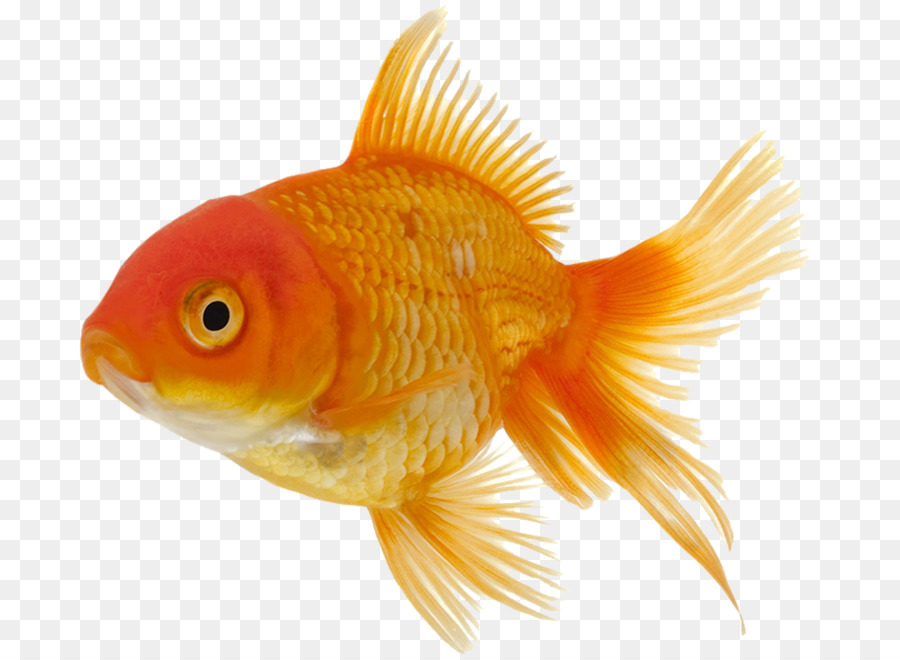 What you understand is difficult and troublesome.
What you understand is difficult and troublesome.
The way out of the situation can be food from our table - lettuce, spinach. But goldfish eat them less willingly, lettuce dangles in the aquarium for a long time and it is not worth keeping it like that, for obvious reasons.
The most ergonomic way is to use specialized food for goldfish. For example, use food from the Tetra GoldFish series. Please note that they are all different - with an emphasis on different ingredients. We would recommend making a mix at all - using TetraGoldfish Granules as a base food and TetraPhyll Granules as an additional plant food. The thing is, TetraPhyll is 100% plant food. And by alternating these feeds, you will provide your pets with a balanced diet by 100-500 percent.
The feeding regimen of goldfish also has some peculiarities. Most aquarium tropical fish can easily be fed once a day. It is better to feed gold more often 2-3 times a day, but in small portions. Again, this recommendation rests on the specifics of the digestive system of these fish.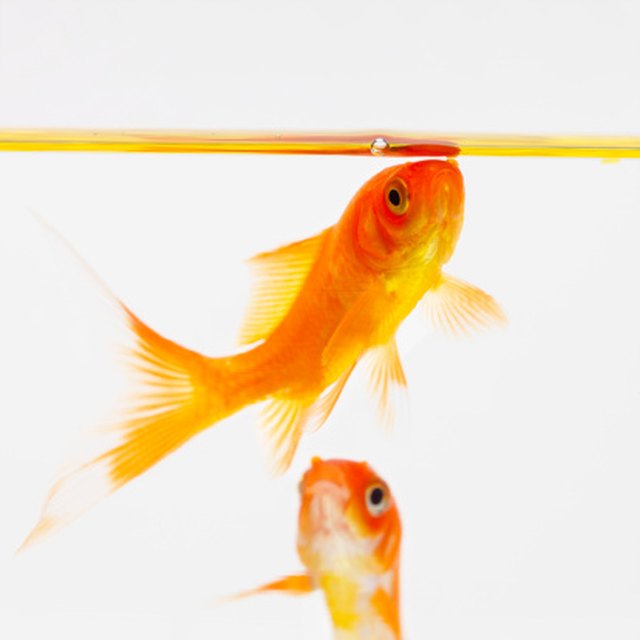
Look how much duckweed grows in a week in an aquarium separate from goldfish.
As you know, duckweed and riccia grow very quickly and do not require special conditions for keeping. In a week, it will grow on a scale sufficient to feed a couple of young scrofula. Duckweed should be bred in a separate tank and transferred to goldfish ~ 2-3 times a week. That's actually all you need.
Subscribe to our YouTube channel to miss
What feed can be consulted by
To date only TETRA produces 13 items for gold fish, which indicates the great popularity of these fish. Let's take a closer look at the Tetra form.
Basic food - 9 types.
Tetra Goldfish Pro
High quality, balanced nutritional food for all types of goldfish.
Tetra Goldfish Pro has a high nutritional value due to its low temperature manufacturing technology.
Optimized protein-to-fat ratio ensures better absorption of nutrients and guarantees an improved digestive process.
Reduced water pollution resulting in reduced algae growth and cleaner water.
New formula of universal chips:
- yellow center contains krill to enhance natural coloring and support muscle development;
- the red rim contains nutrients;
- omega-3 fatty acids ensure healthy growth;
Patented BioActive formula - promotes a healthy immune system and longevity.
Tetra Goldfish
Nutritious flakes suitable for all types of goldfish.
Contains all essential nutrients and trace elements to improve health, vitality and color richness.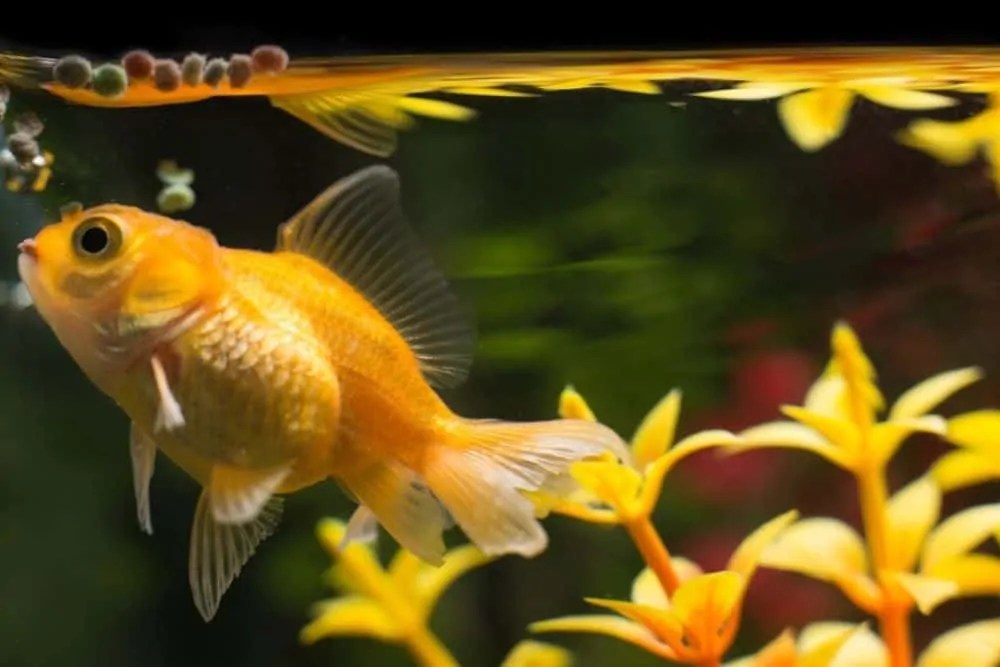
Patented BioActive formula - promotes a healthy immune system and longevity.
A Clean & Clear Water formula - improves feed digestibility and reduces fish excrement to keep water clean and clear.
Feeding the fish is very convenient thanks to the special lid for precise dosing.
Tetra Goldfish Color
Balanced food suitable for all types of goldfish - to improve coloration.
Offers varied nutrition through optimally formulated flakes with a high content of natural color enhancers to bring out the beauty of your fish.
This type of food contains all the necessary nutrients and trace elements to improve health and vitality.
Patented BioActive formula - promotes a healthy immune system and longevity.
A Clean & Clear Water formula - improves feed digestibility and reduces fish excrement to keep water clean and clear.
Tetra Goldfish Energy
Food sticks for all types of goldfish.
These floating sticks will not only improve your fish's health, but also increase their resistance to diseases.
Ensures the consumption of the optimal amount of fat, which is easily absorbed by the body and serves as a reserve source of energy. Easily digestible.
Tetra Goldfish Color Sticks
Food crumbs developed on the basis of the new BioActive formula for all types of goldfish.
Floating small granules with a high content of algae (spirulina) provide a rich natural coloration of fish and increase the body's resistance to disease.
Excellent assimilation due to a complete herbal composition.
Tetra Goldfish Granules
Floating granules for all types of goldfish.
The pellets are completely eaten by the fish and provide complete nutrition.
Patented BioActive formula - promotes a healthy immune system and longevity.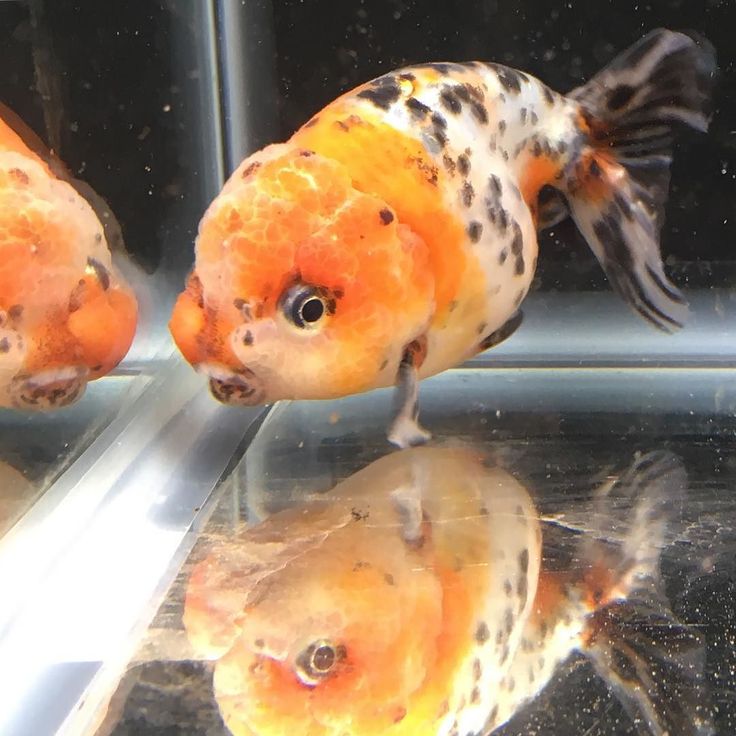
Tetra Goldfish Menu
Balanced food for all goldfish.
Package contains 4 different foods in one can: chips with high nutritional value; granules for good coloring; flakes for a biologically balanced diet; daphnia as a treat for
varied diet. Easy to dose.
Tetra Goldfish Weekend
Compact sticks for all types of goldfish.
Food sticks are easy to dose and last up to 9 days! The high content of vital minerals and proteins and the unique manufacturing process result in a hard feed that does not contain difficult-to-digest astringents and does not degrade water quality.
Tetra Goldfish Holiday
Holiday food for all types of goldfish.
Healthy eating for 14 days. The patented formula contains Daphnia, essential vitamins, trace elements and minerals. Does not cloud water, easy to dose.
Special Premium Foods, 4 types
Tetra Goldfish Gold Exotic
Patented BioActive formula - promotes a healthy immune system and longevity.
A Clean & Clear Water formula - improves feed digestibility and reduces fish excrement to keep water clean and clear.
Excellent digestibility at both high and low temperatures.
The ideal high quality food to keep your fish in perfect shape.
The granules soften quickly so the fish can easily eat them.
Tetra Goldfish Gold Growth
Premium food for all types of goldfish with high quality protein
Essential nutrients and special ingredients ensure good absorption.
Patented BioActive formula - promotes a healthy immune system and longevity.
A Clean & Clear Water formula - improves feed digestibility and reduces fish excrement to keep water clean and clear.
The ideal high quality food to keep your fish in perfect shape.
The granules soften quickly so that fish can easily eat them.
Tetra Goldfish Gold Color
Premium food for all types of goldfish, containing carotenoids, spirulina algae and other color enhancers to maintain the beautiful appearance of fish.
Patented BioActive formula - promotes a healthy immune system and longevity.
A Clean & Clear Water formula - improves feed digestibility and reduces fish excrement to keep water clean and clear.
The ideal high quality food to keep your fish in perfect shape.
The granules soften quickly so the fish can easily eat them.
Tetra Goldfish Gold Japan
Premium pellet food for all breeding goldfish.
Granular food softens quickly in water and provides a complete and varied diet for fish.
Provides a balanced diet for all types of Japanese goldfish: Orandas, Lionheads, Lelescops, Ryukinas, Veiltails, etc.
Small sticks sink easily to the bottom, which makes it easy for Japanese goldfish to find food on the bottom for the sake of habit.
Rich in vegetable proteins for optimal digestion and carotenoids to enhance the natural coloration of the fish.
Subscribe to our YouTube channel so you don't miss anything
See also:
Goldfish: Rare breeding rocks Golden fish. 9000 9000 9000 9000 9000 9000 9000 9000 9000 9000 9000 9000 9000 9000 9000 9000 9000 9000 9000 9000 9000 9000 9000 9000 9000 9000 9000 9000 9000 9000 9000 All types of gold fish 9000 EHEIM EHEIM 9000,0002 Auto-focus for fishing ? Category: Aquarium articles / Useful tips for keeping fish | Views: 160 376 | Date: 28-07-2013, 01:48 | Comments (1) Contents one Feeding selected goldfish 2 What to feed goldfish on vacation? 4 minutes estimated reading time Goldfish are one of the most popular pets among aquarium connoisseurs. It is interesting that the distant, mysterious China is the birthplace of goldfish, and the first representatives of the species appeared as much as 1500 years ago. Initially, these outlandish pets were found only in the luxurious homes of the wealthiest people, as well as in temples, but over time, their breeding became more accessible, and goldfish spread among the ordinary population of China and further: through the countries of the East and around the world. In China, goldfish, which have such an ancient history, are still considered a symbol of prosperity and joy today. But in order for a colorful pet to please the eye and bring happiness for a long time, it needs to be well and responsibly looked after, because even the smallest and most fragile fish needs care and special care. Of course, the foundation of good health, well-being and a long life is a correct, balanced diet, made specifically for goldfish and fully taking into account the needs of these pets. Among the huge range of aquarium fish food offered in pet stores, it can be difficult to make the right choice. The main attention should be paid to the reputation of the manufacturer, the purpose and composition of the food line, the expiration date and, of course, the integrity of the packaging. When choosing food for goldfish, you should not buy a diet for catfish, bettas, guppies or other aquatic inhabitants that you liked because of the beautiful packaging. After all, despite the fact that they are all inhabitants of the aquarium, each species has its own characteristics of keeping and feeding, and it is very important to take them into account so that the pets live happily ever after. High-quality balanced food for goldfish serves as a reliable basis for their good life, proper growth and development. The best, healthiest, and most convenient solution is complete, ready-to-eat foods designed specifically for your aquarium fish variety. All the ingredients and nutrients in such feeds are carefully balanced taking into account the daily needs of the pet, and it is almost impossible to achieve such a balance on your own. Diets from trusted manufacturers carefully combine vitamins, immune stimulants and energy sources, which have a beneficial effect on various body functions and ensure a healthy and long life for pets. Some food lines also contain a special formula to improve the digestibility of the food and, as a result, reduce the waste produced by the body, so that the water in the aquarium remains clean and clear for even longer. The best choice for goldfish, for example, is quality flake food. As a rule, it contains several useful ingredients - sources of nutrients, minerals and vitamins that fish need for full development. In the process of feeding, the flakes slowly sink into the water column - and the fish quickly catch them. An alternative to this method of feeding is diets in the form of floating sticks and granules (or grains): they do not sink to the bottom of the aquarium, but stay on the surface of the water. food made from the chips mix is very popular, also rich in nutrients and, thanks to low temperature production, with a high nutritional value. However, the best choice for goldfish, according to many, are diets in the form of soft and light granules with a high vitamin content, good digestibility and spirulina algae and carotenoids to enhance natural coloration. Easy to use and series that combine several types of feed in one package, for example, flakes, chips, granules and daphnia. Special attention deserves the feeding of breeding goldfish, such as telescopes, orandas, lionheads, veiltails, etc. Taking into account the individual characteristics of these varieties, food lines with a high content of herbal ingredients and sprouted wheat have been developed, which are a reliable prevention of diseases associated with metabolic disorders, which Unfortunately, these varieties of goldfish are susceptible. For breeding goldfish, there are also separate feeds that are balanced in composition and serve as a preventive measure for certain features of fish. For example, Japanese goldfish are accustomed to looking for food at the bottom, and not grabbing it from the surface of the water. If these fish are fed flakes or non-sinking sticks, they can swallow too much air and float to the surface. The advantage of complete food for aquarium fish is not only in their benefits, but also in convenience. For example, ready-made diets allow the owner of the aquarium not to worry about his pets during a vacation or trip. For such cases, there are special series of feed marked Holliday or Weekend, which are produced in the form of large layers (blocks). It is enough to attach the compressed food blocks to the glass of the aquarium or put it on the bottom. After that, the compressed food is slowly, over several days, broken down by the action of water so that the fish can eat in a mode that is comfortable for them.
How and how much to feed fish
9000 9000 002
How to determine the half of the gold fish
Why are fish
How much fish can be in the Aquarium 100 liters What to feed goldfish | Tail News
 And no wonder, they are very beautiful, unpretentious, friendly. In addition, there are several varieties of goldfish, each of which is characterized by its unique color and shape.
And no wonder, they are very beautiful, unpretentious, friendly. In addition, there are several varieties of goldfish, each of which is characterized by its unique color and shape. 
 Despite the fact that many aquarium inhabitants are unpretentious in nutrition and can easily dine with dishes that are unusual for them, such as bird meat or cereals, you should not experiment with food, because it is dangerous not only for health, but also for the life of pets.
Despite the fact that many aquarium inhabitants are unpretentious in nutrition and can easily dine with dishes that are unusual for them, such as bird meat or cereals, you should not experiment with food, because it is dangerous not only for health, but also for the life of pets.

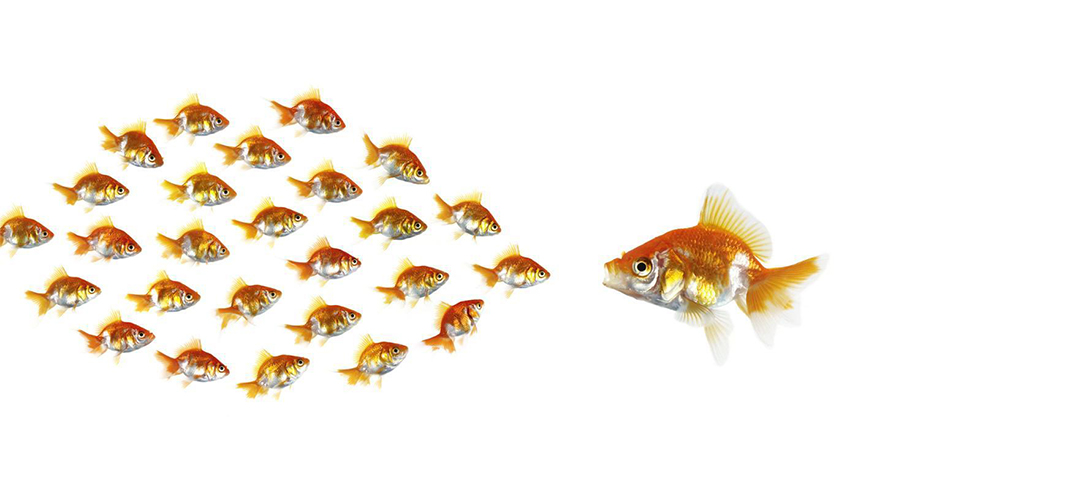 Since in nature the food of fish is very diverse, then at home keeping a pet should not be fed with only one type of food, it is harmful to his health.
Since in nature the food of fish is very diverse, then at home keeping a pet should not be fed with only one type of food, it is harmful to his health. Feeding breeding goldfish
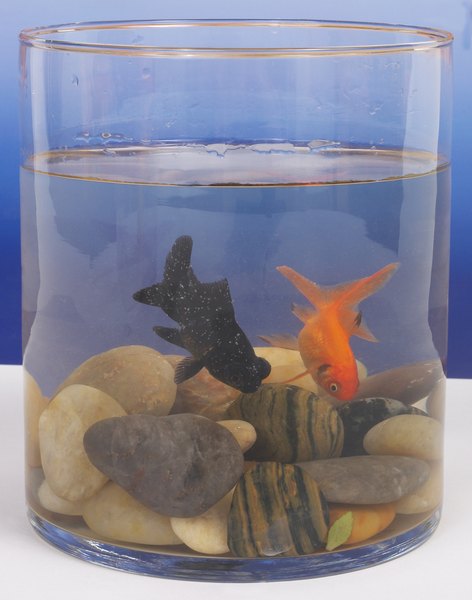 You might even think that the fish is dead, but it is not: it only swims with its belly up. After a few hours, this state passes, and the fish is freed from excess air. To prevent Japanese goldfish from floating to the surface, you need to feed them special anti-roll food. Usually these are granules that quickly sink to the bottom and do not float to the surface.
You might even think that the fish is dead, but it is not: it only swims with its belly up. After a few hours, this state passes, and the fish is freed from excess air. To prevent Japanese goldfish from floating to the surface, you need to feed them special anti-roll food. Usually these are granules that quickly sink to the bottom and do not float to the surface.
What to feed goldfish on vacation?



